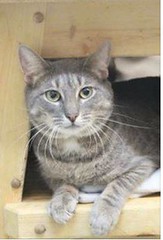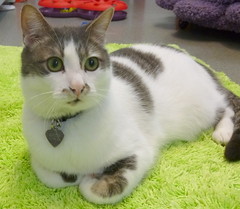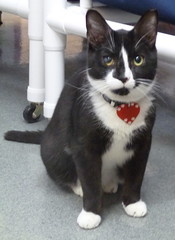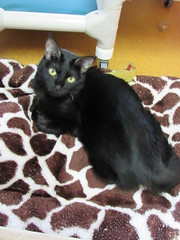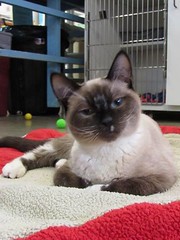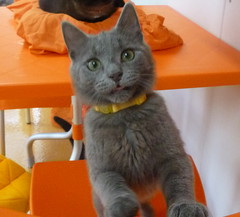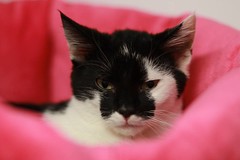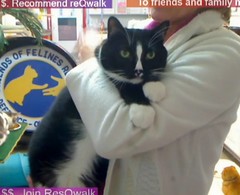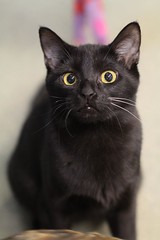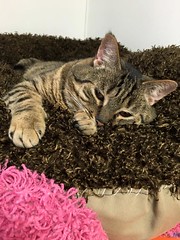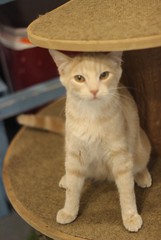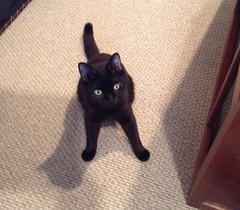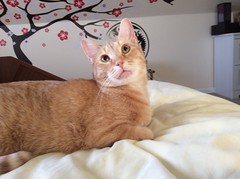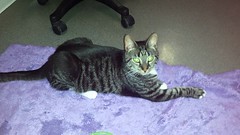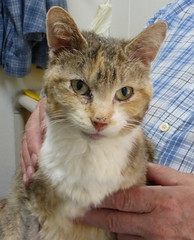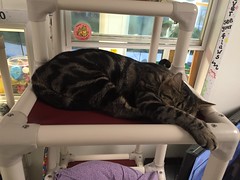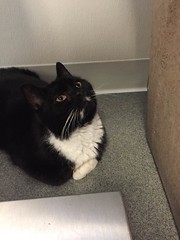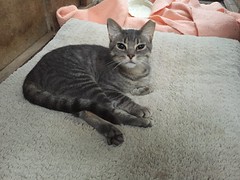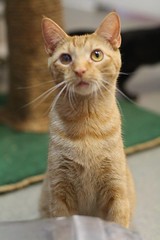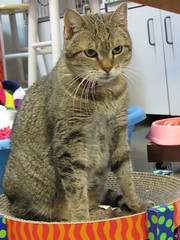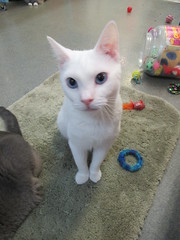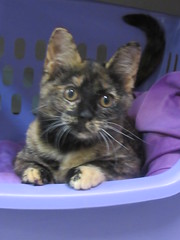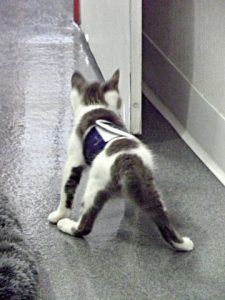
Derecho
What is Cerebellar Hypoplasia/CH?
This is a disorder found in cats and dogs which causes jerky movements, tremors and generally walking and balance problems. It is a non-progressive and non-contagious condition. Symptoms appear at birth although they may not be noticed until the kitten starts walking. If CH-like symptoms show up suddenly or later in life, this would not be CH.
How does a cat get CH?
A kitten is born with CH when the cerebellum is underdeveloped at birth. The cerebellum controls fine motor skills and coordination. CH is most commonly caused by the kitten’s mother contracting the Panleukopenia virus (feline distemper) while pregnant. Kittens with CH are not infected with or carriers of this virus, it has only stunted the cerebellum’s growth while developing.
How many kittens are affected in a litter?
It varies—it could be one kitten or all of them.
How long will a CH cat live?
They can live as long as any other cat!
What is the treatment for CH?
There really is no treatment. It’s more a way of managing the condition. The cat should be indoors only. A family can also “CH kitty proof” a house. Ramps can be used to help them get up on furniture. Sometimes a raised food dish helps. You also may want to pad sharp corners of furniture. Be careful of stairs—many CH cats have trouble negotiating going up and down safely.
What are the levels of CH?
Most cats have good life quality and make up in personality what they lack in motor skills. While some cats have a slightly noticeable stumbly gait, others may have significant trouble getting around. Still, there are others who are unable to walk at all. It’s important to remember that the cat isn’t sick, weak or hurt—he simply is uncoordinated. CH cats don’t seem to know that they’re any different from other cats!
There is a system of “measurement” though for CH cats.
Mild—These cats are very capable and require little to no extra care. They may have an unusual gait (called high steppers), an occasional balance loss and/or slight head tremors.
Moderate—Cats with moderate CH can get around on their own, but one end of their body may appear to be doing something entirely different from the other half. They frequently lose their blanace, have noticeable head tremors, and walk with their legs splayed widely apart.
Severe—These CH cats cannot walk on their own and require a great deal of special care. They cannot walk or stand and sometimes flipflop to get around.
Is CH preventable?
This condition is easily prevented by vaccinating female cats for feline distemper before they get pregnant. Simply, vaccinate!
Are there other health issues one should be aware of for CH cats?
CH cats are very prone to chipping their teeth. Besides the issues with being uncoordinated, there are no conditions to worry about. They are susceptible to the same medical problems that any other cat may have. It’s the injuries that can happen from the uncoordination that can be the highest cause of problems.
